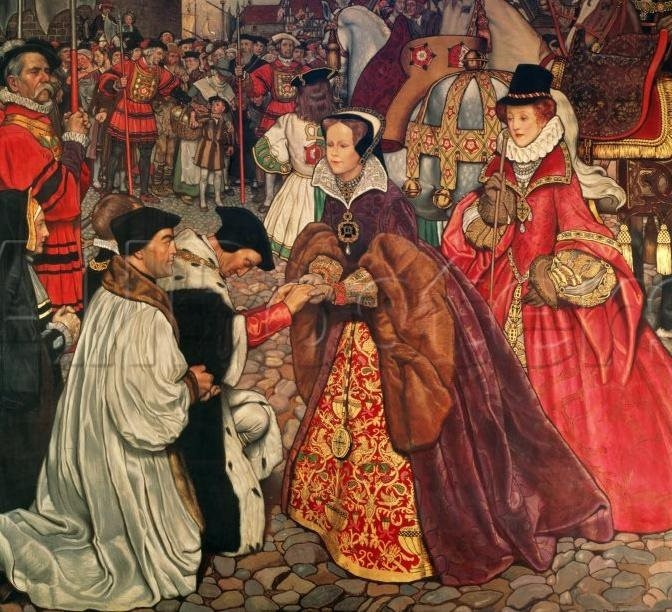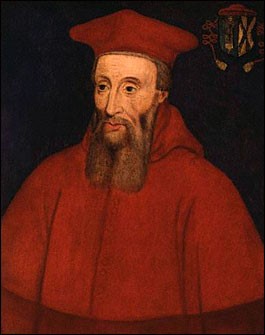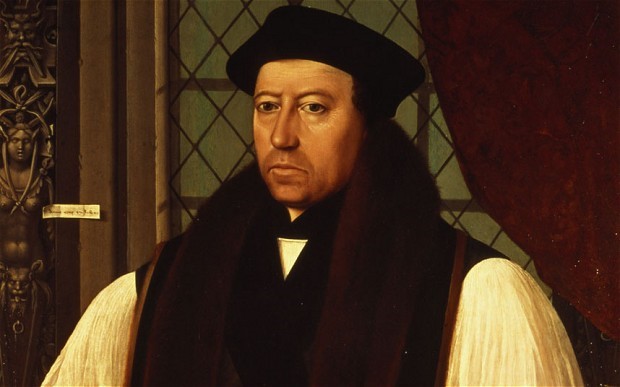William Cecil: Life Story
Elizabeth I’s Chief Councillor
Chapter 6 : Mary's Reign
Cecil was not immediately reappointed to public office as some of his former colleagues, such as Paget and the Earl of Winchester were. He retired to his house at Wimbledon with his family, and, to public view, lived quietly. It seems, however, from evidence presented by his biographer, Stephen Alford, that he was giving support to men undermining the new Government, in particular, his old adversary, Gardiner, Bishop of Winchester, and now, having been released from the Tower, Lord Chancellor.

A man named Day, working at least in part with Cecil’s brother-in-law, William Cooke, was running a secret printing press from land owned by Cecil in Lincolnshire. The works he printed attacked the new Government’s stance on religion and produced hagiographical works about Lady Jane.
On religious matters, Cecil conformed. Other Protestants were not willing to bow to the restoration of the old faith and went into exile. These exiles included Cecil’s friend, Katherine Willoughby, Dowager Duchess of Suffolk and her new husband, Richard Bertie, and Cecil’s father-in-law, Sir Anthony Cooke. Others stayed home. Sir Nicholas Bacon remained in his post at the Court of Wards and Liveries, with his wife now a Gentlewoman of the Privy Chamber. Roger Ascham, Cecil’s old friend from Cambridge, was the new Queen’s Latin Secretary. Sooner or later, it seemed likely that Cecil would return to office.
In the meanwhile, Cecil retained a connection with the Queen’s sister, and, for the time being, heir, Elizabeth. He had become steward of some of her lands in Lincolnshire, early in the reign of Edward, and continued in that post.
Cecil’s chance at rehabilitation came in 1554 when he was commanded to act as host to one of the Secretaries of Philip of Spain, who had arrived in England and married the Queen in July 1554. He then gained a further step when, with what might have been an exquisite sense of irony on the part of Queen Mary, Cecil was sent to Brussels to greet Reginald, Cardinal Pole, and escort him back to England after an exile of nearly thirty years.

Pole was returning to England to take up the position of Archbishop of Canterbury, and to return the country to the Roman fold. Surprisingly, Pole and Cecil got on well. Pole (who was later traduced as a heretic by the Pope himself, for his reforming stance) wanted to reform Catholicism in many of the ways that had been first mooted, back in the 1520s, and the scholar in both men appreciated the other.
In early 1555, it looked as though Mary would have a child, reinforcing the return to Rome, and, from Cecil’s perspective, the best thing to do was to accept reality and make the most of the new situation. He continued to build links with Mary’s Privy Council, and even sent her a gift. Slow integration continued, and in 1555 he was part of a delegation that travelled to Brussels to treat of peace between France and Spain. He then spent a couple of months travelling.
Cecil was returned to Parliament in 1555, where he was one of the opponents of a Government bill to confiscate the lands of the Protestant exiles. It was a subject to touch him closely, with many of his friends abroad. The bill was defeated when the opponents locked the supporters out of the House and forced a count. The Government was not happy with this misconduct by the Commons, but took no action, beyond sending stern reprimands.
Cecil had purchased the lease of the Rectory of Wimbledon back in 1549. The Manor of Wimbledon (Crown land) was now granted to Pole, and Cecil lobbied hard to become his steward for the land, a position granted in 1556. The Cecils continued to show public conformity to Catholicism. Mildred attended one of Pole’s great public sermons, and the couple attended Mass in St Mary’s Church, Wimbledon at Easter 1556. As he was ‘Rector’ of the parish, the offerings from the Easter Mass, less the costs of bread, wine, candles etc went into his pocket.

Meanwhile, those who would make no outward show of conformity were punished with increasing severity – nearly three hundred people, some of whom were Cecil’s former colleagues, such as Cranmer, and the Bishops Latimer and Ridley, were burnt. Sir John Cheke, his brother-in-law, alth0ugh he had initially deplored those who hid their Protestant beliefs, was offered the choice of recantation, or burning. He chose the former.
During these years, the Cecils visited their friends and family, waited on their patrons at court, and began a family. Their first child, Frances, born in 1554, lived only a few hours, but their second, Anne, born in 1556, survived. They attended christenings and weddings, frequently amongst Mildred’s Cooke, Bacon, Grey and Hoby connections. Cecil was also continuing to make himself useful to Mary’s Councillors and visiting Cardinal Pole.
Things began to change in 1558. The loss of Calais weighed heavily on the Queen and her Government, and Mary’s renewed hope of pregnancy was not widely believed to have firm foundations. Her health was failing, and the prospect of Elizabeth becoming Queen became closer. During February 1558, Cecil paid a visit to Elizabeth, ostensibly, no doubt to discuss his stewardship of her lands, but perhaps with other intentions, too. By October, it was only a matter of time before Elizabeth became Queen.
King Philip’s Ambassador, Count Feria, wrote to the King, noting that it was likely that Cecil would be appointed to her Government. He described Cecil as:
‘…said to be an able and virtuous man but a heretic.’
On 17th November, 1558, both Queen Mary and Cardinal Pole died of influenza. Cecil was at Hatfield on that day, with Elizabeth, and they were already planning for the future.





